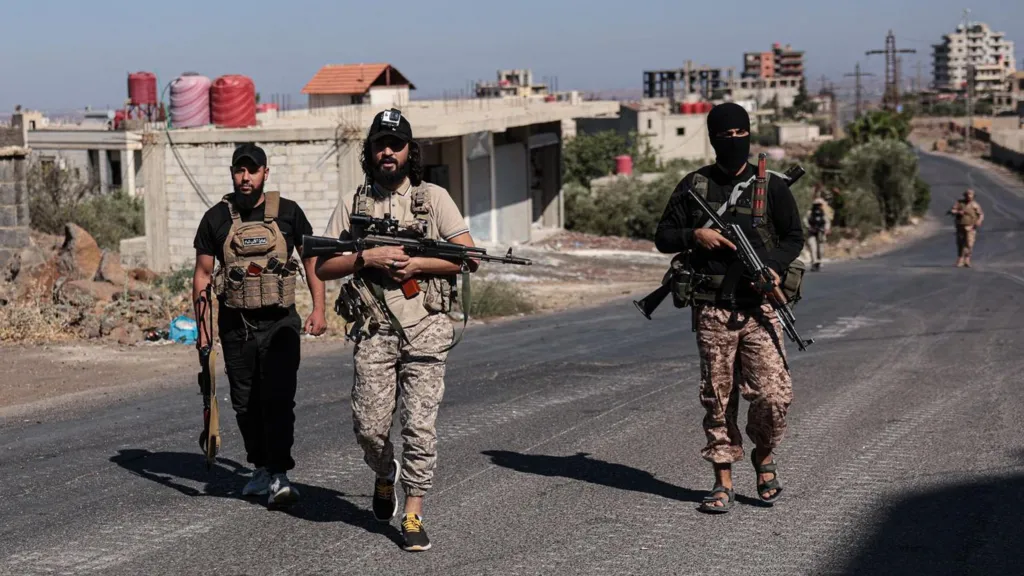In the southern Syrian province of Sweida, home to the country’s largest Druze community, the struggle to enforce a ceasefire by newly deployed government forces has starkly exposed the enduring volatility of Syria’s postwar landscape and the fraught communal fabric between Druze and Bedouin groups.
Background: A New Cycle of Violence
The latest round of unrest erupted on July 13, 2025, when fierce clashes broke out between Druze militias and Bedouin tribes around Sweida. Violence escalated rapidly, drawing in not only local militias but also prompting Syrian government deployments and, significantly, airstrikes from neighboring Israel, which cited the need to defend the Druze minority. The casualty toll spiraled: hundreds were killed in less than a week, with the Syrian Observatory for Human Rights recording nearly 600 dead fighters and civilians.
Ceasefire Amid Fragmentation and Distrust
Confronted with mounting bloodshed and internal displacement, Syrian authorities announced multiple ceasefire arrangements, the most recent of which took effect on July 17–18. This agreement was brokered with direct involvement from the United States, Turkey, and several Arab states and included partial government force withdrawals plus the appointment of local Druze leaders to maintain security.
Despite these moves, the government’s ability to enforce the ceasefire has been seriously hampered by structural challenges:
Fragmented Authority: While some Druze leaders endorsed the ceasefire, others—led by influential cleric Hikmat al-Hijri—rejected the terms and called for armed opposition, demanding Bedouin departure from the province and limiting the government’s presence to border checkpoints.
Internal Divisions: Both Druze and Bedouin factions are internally divided, alternating between statements of support and rejection for the truce, adding confusion and triggering cycles of retaliatory violence.
Ongoing Violence and Reprisal Attacks
Even after the formal ceasefire announcement, reports of sporadic clashes and retaliatory attacks persisted. Government forces, as of July 19, have been unable to completely quell outbreaks of violence nor successfully mediate between groups; Druze militias have carried out reprisals against Bedouin communities, causing significant displacement and further destabilizing the region.
Shortly following the government’s pullback, al-Hijri-aligned Druze factions allegedly committed massacres against local Bedouin tribes, prompting a mass exodus to neighboring Daraa Governorate. These events underscore that the ceasefire remains extremely fragile and dependent on deeply contested local arrangements rather than robust, centrally enforced security.
External Interference and Regional Dynamics
The role of Israel has further complicated implementation efforts. Israel’s airstrikes against Syrian government positions, justified as acts to protect the Druze, have fueled Syrian claims of foreign intervention and sectarian incitement. Meanwhile, diplomatic mediation involving the U.S. and Turkey has brought about temporary halts to the fighting, but these have proven difficult to sustain amid fluctuating loyalties and ongoing distrust.
Humanitarian and Political Fallout
The humanitarian impact has been severe: hundreds killed, civilians displaced, and new cycles of sectarian animosity dangerously inflamed. Efforts to deliver aid and restore essential services are part of a multi-phase plan announced by Syrian authorities, who hope to gradually reassert state institutions and stabilize the province.
Yet, in the absence of genuine local reconciliation and with the involvement of regional powers pursuing divergent agendas, the prospects for lasting peace in Sweida remain dim. Syrian forces continue to struggle with a ceasefire whose sustainability is tenuous and implementation incomplete, as the province—which has historically remained neutral during much of the Syrian civil war—now finds itself on the fault lines of Syria’s unresolved conflicts and shifting regional power dynamics.

